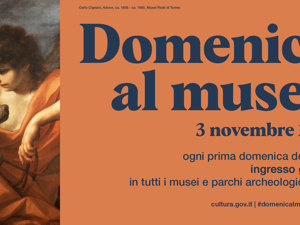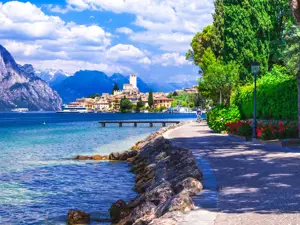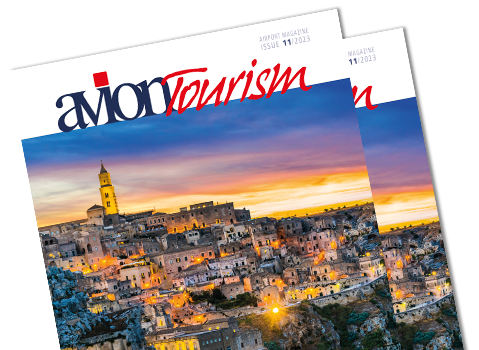A very romantic city
Throughout Italy and the world Verona is known as the ‘city of lovers’, a fame that comes from being the setting of the tormented and tragic love story of Romeo and Juliet, immortalised by Shakespeare in his celebrated play.

Juliet’s House Photos: Sisterscom.com, Depositphotos
Juliet’s House
Each year thousands of couples, whether married or not, visit the Casa di Giulietta or Juliet’s House, with its famous balcony, and leave indelible messages on special love stones, or post them to their loved ones by placing them in the containers provided. This is a must-see attraction for anyone visiting Verona, which is considered to bring good luck to all those trying to find eternal love.

Roman bridge and Cathedral of San Giorgio Photos: Sisterscom.com, Shutterstock
An important and ancient history
But this city in the region of Veneto has an important and ancient history, which is divided into various eras. The Romans left much evidence of their presence, as seen in the insignias and many important monuments, which include
- the Arena, a spectacular open-air theatre, where each year one of the most famous opera seasons in the world takes place;
- the Roman Theatre, which plays host to the Estate Teatrale Veronese (Verona Theatre Festival Season) and the Shakespeare Festival;
- the imposing, monumental Arco dei Gavi (Gavi Arch), built in the 1st century A.D., at the end of the reign of Augustus, by the Gavia family, one of the most prominent families of the time in terms of wealth and prestige;
- Ponte Pietra (Stone Bridge), the city’s oldest crossing over the River Adige.
On the remains of the ancient Roman Forum
- Piazza delle Erbe, a picturesque and bustling market centre, with stands selling items that range from antiques to flowers and fruit and vegetables. Surrounding the square are important historic buildings, such as the medieval
- Domus Mercatorum, once the home of the city’s guilds of merchants,
- the thirteenth-century Torre del Gardello, on which the first public clock was installed in 1370 at the request of Cansignorio della Scala;
- the historic Palazzo del Comune (City Hall);
- in the middle of the square, the old fountain of the Verona ‘madonna’, (madonna in medieval language meant lady, noblewomen), which depicts a woman made local red marble, a symbolic representation of the city and one of the most important and much loved monuments of the Veronese people. It was built in 1368 to celebrate the city’s splendour under the famous Signoria della Scala, the Lords of Verona, by one of its most important members, Cansignorio.
Much evidence of the Signoria della Scala (also known as Scaligieri or Scaliger) is still found in Verona. This powerful family produced historic characters such as Alboino, but above all Cangrande, the splendid patron and protector of Dante Alighieri in his exile in Florence, mentioned by the poet in the Divine Comedy. They are commemorated in the Arche Scaligere, a monumental Gothic tomb that holds the Lords of Verona who made the city great in the fourteenth and fifteenth centuries.

Arena of Verona Photos: Sisterscom.com, Shutterstock
The Church of Santa Anastasia, the most important Gothic monument of the city, is also well known. Inside, in the Cappella Cavalli, is the spectacular fresco ‘The Virgin Mary on the Throne’ by the Veronese artist Altichiero da Zevio, who was very well known at the time. In this work, the Virgin Mary is depicted surrounded by angels and members of the Cavalli family, who are presented by their patron Saints. Another gem of the Veronese Gothic style is found in the Cappella Pellegrini: ‘St. George and the Princess’, the work of Pisanello, which is resplendent in gold, silver and vivid colours.
Today Verona is a city in tune with the times, which has an important Trade and Exhibition Centre. Professionals and visitors from all over the world travel to this centre for its renowned trade fairs, the most important of which are Vinitaly and the Horse Show, as well as those dedicated to design and home interiors, or even technology.
Text by Anna Glik
Copyright © Sisterscom.com
Video: www.veneto.eu
Tourism Board
www.turismoverona.eu
www.tourism.verona.it
Partnership with Booking.com
Where to sleep in Verona

Verona Copyright © Sisterscom.com, Shutterstock
Verona is a welcoming city and offers different possibilities for accommodation.
To find the ideal hotel and the best offers you can do a search for the stars but also for districts or landmarks.
DISTRICTS
Hotels in the districts
LANDMARKS
Hotels in tourist areas
WHERE TO GO in verona
Monuments in Verona

Copyright © Sisterscom.com, Shutterstock
ARENA AMPHITHEATRE IN VERONA
Piazza Bra
The Roman Amphitheatre is the most famous monument in Verona and is a must see for the tourist. The monument was built in the first half of the 1st century A.D. and it is the 4th largest amphitheatre in Italy after Rome’s Colosseum, the amphitheatre of Capua and Milan. Its elliptical shape produces perfect acoustics from any stand point and allows it to accommodate a large number of spectators. Since 1913 the Arena is the stage for different entertainments
The Roman Amphitheatre is the most famous monument in Verona and is a must see for the tourist. The monument was built in the first half of the 1st century A.D. and it is the 4th largest amphitheatre in Italy after Rome’s Colosseum, the amphitheatre of Capua and Milan. Its elliptical shape produces perfect acoustics from any stand point and allows it to accommodate a large number of spectators. Since 1913 the Arena is the stage for different entertainments

Copyright © Sisterscom.com, Shutterstock
JULIET'S HOUSE
Via Cappello, 23
The House of Juliet, famous for its "balcony", is a building dating back to the XIII century and was the Cappello family’s property for a long time. The identification of the Cappellos with the Capulets has given rise to the idea that there stood the House of Juliet, heroine of Shakespeare's tragedy. This Medieval house has a facade made of bricks, a portal in Gothic style, trefoil windows and an external balustrade linking the various spaces of the house. Inside the courtyard there is the bronze statue of Juliet by the sculptor Nereo Costantini.

Copyright © Sisterscom.com, Shutterstock
THE CATHEDRAL OF VERONA
Piazza Duomo
The Cathedral, which is dedicated to S. Maria Assunta, is a complex of architectural buildings which include S. Giovanni in Fonte, S. Elena, the Canons’ cloister, theCapitular library, the square in front of the church. Outside you can admire: the Romanesque façade, Nicolò double level porch (1138), the portal with its lunette and reliefs, the splendid side porch and the apse area. Inside, instead of particular interest are: Sammicheli’s original choir screen, the chapels with works by Falconetto, Liberale, Giolfino, Torbido, Titian’s “Assumption” (1530).
The Cathedral, which is dedicated to S. Maria Assunta, is a complex of architectural buildings which include S. Giovanni in Fonte, S. Elena, the Canons’ cloister, theCapitular library, the square in front of the church. Outside you can admire: the Romanesque façade, Nicolò double level porch (1138), the portal with its lunette and reliefs, the splendid side porch and the apse area. Inside, instead of particular interest are: Sammicheli’s original choir screen, the chapels with works by Falconetto, Liberale, Giolfino, Torbido, Titian’s “Assumption” (1530).

Copyright © Sisterscom.com, Shutterstock
PIAZZA DELLE ERBE IN VERONA
Piazza delle Erbe, in the heart of Verona - for centuries the center of economic and political life of the city - is surrounded by palace and buildings that have characterized the history of the city of Verona. The system follows the ancient Roman Forum and inside is possible to find the Baroque Palazzo Maffei, the Gardello Tower, the Town Hall, the fourteenth-century Domus Mercatorum, the Medieval Lamberti Tower and in the middle of the square, the ancient fountain known as the "Madonna Verona".
Museums of Verona

ARCHAEOLOGICAL MUSEUM
Via Regaste Redentore, 2
The Archeaeological Museum of Verona, founded in 1924, is located within the Roman Theatre and hosts archaeological finds both from Verona and its surrounding areas (epigraphs, sculptures, mosaics, bronzes, etc.). The works on display are about 600 and another 150 can be seen displayed within the external cloister and the Theatre area whereas some thousands pieces are preserved in store-rooms. The whole complex of buildings and cloisters of the former Jesuits convent is certainly a monument to visit.

Copyright © Sisterscom.com, Shutterstock
AMO Arena MuseOpera
Via Massalongo, 7
The Museum of the Fondazione Arena of Verona, housed in the historic Palazzo Forti, brings the visitor to discover the creativity and excellence of Italian Opera Lirica. Thirty rooms hosting different historical paths and multimedia as well as books, photographs, letters, scores, sketches, figures and scenes to learn about the process of birth of opera.
The Museum of the Fondazione Arena of Verona, housed in the historic Palazzo Forti, brings the visitor to discover the creativity and excellence of Italian Opera Lirica. Thirty rooms hosting different historical paths and multimedia as well as books, photographs, letters, scores, sketches, figures and scenes to learn about the process of birth of opera.

NATURAL HISTORY MUSEUM
Lungadige Porta Vittoria, 9
The Museum of Natural History in Verona is located in the prestigious Palazzo Pompei and hosts various sections dedicated to the scientific study of minerals, rocks, paleontology and zoology. The scientific material was collected in the course of almost five centuries, from the museum's researchers and naturalists. Well-ordered and cataloged, includes millions of natural objects which are an important asset.
The Museum of Natural History in Verona is located in the prestigious Palazzo Pompei and hosts various sections dedicated to the scientific study of minerals, rocks, paleontology and zoology. The scientific material was collected in the course of almost five centuries, from the museum's researchers and naturalists. Well-ordered and cataloged, includes millions of natural objects which are an important asset.
Excursions in Verona

Copyright © Sisterscom.com, Shutterstock
PARK CITY WALLS
The walls, which extends for about 9 miles, was used as a public park after the Second World War. Born with a military function, protecting the city surrounding the entire historical center. The perimeter of the wall is interspersed with towers, bastions, ramparts and gates of the city: Porta Nuova, Porta Palio and Porta San Zeno. In these areas arise gardens, picnic areas and a path of health, which are the green lungs of the city.

Copyright © Sisterscom.com, Shutterstock
SIGURTÀ PARK
Via Cavour, 1 - Valeggio sul Mincio
The Parco Giardino Sigurtà covers an area of 600,000 square meters and was open to the public in 1978. The Garden-Park is considered one of the most amazing parks in the world. There are many attractions in the park and there are different opportunity to visit it: on foot, with fun train, by bicycle, by golf cart or by shuttle. The Park covers the edges of the hills close to Lake Garda, just eight kilometers south of Peschiera.
The Parco Giardino Sigurtà covers an area of 600,000 square meters and was open to the public in 1978. The Garden-Park is considered one of the most amazing parks in the world. There are many attractions in the park and there are different opportunity to visit it: on foot, with fun train, by bicycle, by golf cart or by shuttle. The Park covers the edges of the hills close to Lake Garda, just eight kilometers south of Peschiera.
Partnership with GetYourGuide
Tour and excursions
News & Useful info
Shopping
Luxury
You might be interested in
Destinations found in the vicinity
Other destinations
Airports nearby Verona






























